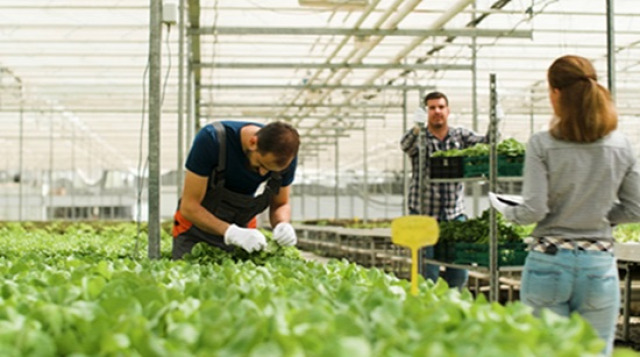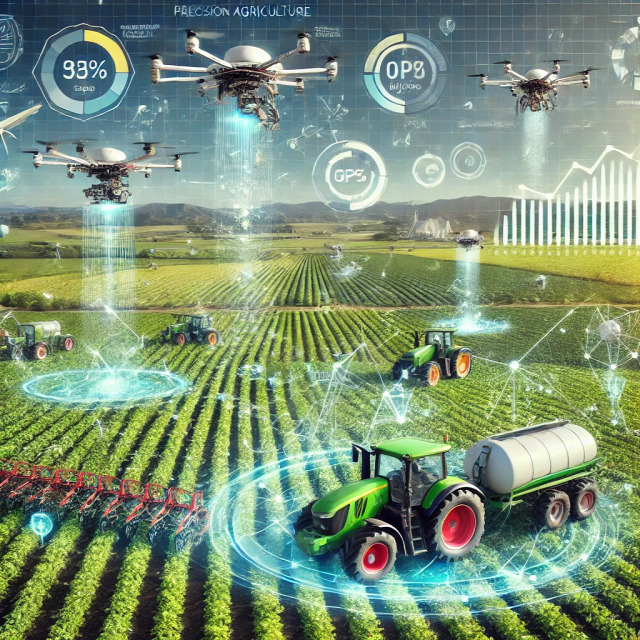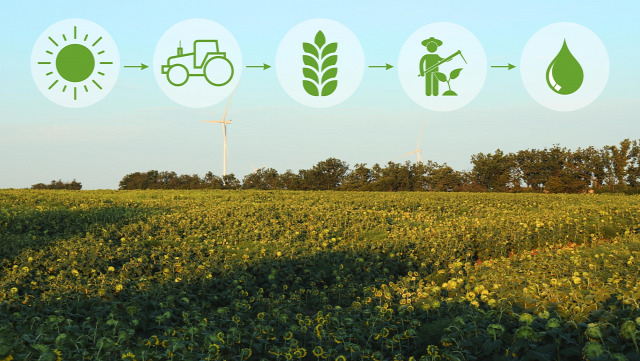
The precision agriculture market is experiencing unprecedented growth, revolutionizing how farming is conducted worldwide. With the integration of advanced technologies like artificial intelligence (AI), the Internet of Things (IoT), and big data analytics, precision agriculture is enabling farmers to optimize resource use, reduce environmental impact, and increase productivity.
This article explores the latest trends in the precision agriculture market, key growth opportunities, market segmentation, and how industries are leveraging these advancements to stay competitive.
Market Overview
According to BIS Research, the global precision agriculture market was valued at $9,591.8 million in 2023, and it is expected to grow at a CAGR of 15.71% to reach $41,265.0 million by 2033 during the forecast period of 2023-2033. The rapid adoption of smart farming technologies, coupled with the growing need for sustainable agriculture practices, is driving this market expansion.
Key Trends Shaping the Precision Agriculture Market
Adoption of IoT in Agriculture:
- IoT devices like sensors, drones, and smart irrigation systems provide real-time data on soil, crops, and weather.
- Helps farmers make informed and timely decisions.
Integration of Artificial Intelligence (AI):
- AI analyzes large datasets to predict crop yields and automate farming tasks.
- Enhances efficiency and reduces labor costs.
Sustainability Goals Driving Adoption:
- Precision agriculture minimizes fertilizer, pesticide, and water overuse.
- Promotes eco-friendly practices and reduces environmental impact.
Increased Use of Drones and Robotics:
- Drones improve crop scouting, spraying accuracy, and efficiency.
- Robotics automates planting, weeding, and harvesting, saving time and labour.
Big Data and Predictive Analytics:
- Enables farmers to monitor field conditions, predict weather patterns, and allocate resources effectively.
Government Initiatives and Subsidies:
- Governments in regions like North America and Europe are offering subsidies and support for smart farming equipment.
- Encourages adoption of precision agriculture technologies.
Request for a sample research report on the Global Precision Agriculture Market
Precision Agriculture Market Segmentation
Segmentation by Application:
- Crop Monitoring
- Precision Planting
- Precision Spraying
- Precision Fertilization
- Precision Irrigation
- Farm Management
Segmentation by Technology:
- Guidance Technology
- Sensing Technology
- Variable Rate Application
- Data Analytics and Intelligence
Segmentation by Component:
- Hardware:
- Sensors
- Drones
- GPS Devices
- Automated Machinery
- Software:
- Farm Management Systems
- Data Analytics Platforms
Segmentation by Region:
- North America
- Europe
- Asia-Pacific
- Middle East and Africa
- China
- Rest of the World
How Industries Are Leveraging Precision Agriculture
Agribusinesses: Companies are integrating precision agriculture tools to optimize operations, reduce waste, and improve profitability.
Technology Providers: Tech firms are collaborating with agriculture companies to develop innovative solutions like AI-driven farm management platforms and IoT-enabled devices.
Farmers and Cooperatives: Precision agriculture is empowering small and large-scale farmers to maximize yields, lower costs, and achieve sustainable farming practices.
Government and Research Institutions: Governments are funding research and development initiatives to promote the adoption of precision agriculture technologies and practices.
Challenges in the Precision Agriculture Market
High Initial Costs: The investment required for advanced equipment and technology can be prohibitive for small-scale farmers.
Lack of Awareness: Limited understanding of the benefits of precision agriculture in developing regions.
Data Privacy Concerns: Growing concerns about the security of farm data collected by IoT devices.
Skilled Labour Shortage: A need for trained professionals to operate and maintain precision agriculture equipment.
Get more insights on the Agriculture Market Research Reports.
Future Opportunities in Precision Agriculture
Expansion in Developing Regions: Emerging economies in Asia-Pacific and Africa present vast opportunities for precision agriculture adoption as governments and organizations focus on improving food security and agricultural productivity.
Growth of Sustainable Agriculture: With increasing global emphasis on sustainability, precision agriculture technologies that promote eco-friendly farming practices will witness high demand.
Advancements in Robotics and Automation: The development of autonomous farming machinery will revolutionize traditional farming methods, enhancing efficiency and reducing labor dependency.
Integration of Blockchain Technology: Blockchain can enhance transparency in the agriculture supply chain, ensuring traceability from farm to table.
Conclusion
The precision agriculture industry is at the forefront of transforming global farming practices. By leveraging cutting-edge technologies, industries are not only enhancing productivity and profitability but also addressing critical challenges like food security and environmental sustainability.
With a projected CAGR of 15.71% and significant advancements expected in the coming years, the precision agriculture market offers immense opportunities for stakeholders across the value chain. As industries continue to innovate and collaborate, precision agriculture is poised to revolutionize farming, ensuring a sustainable and food-secure future.



